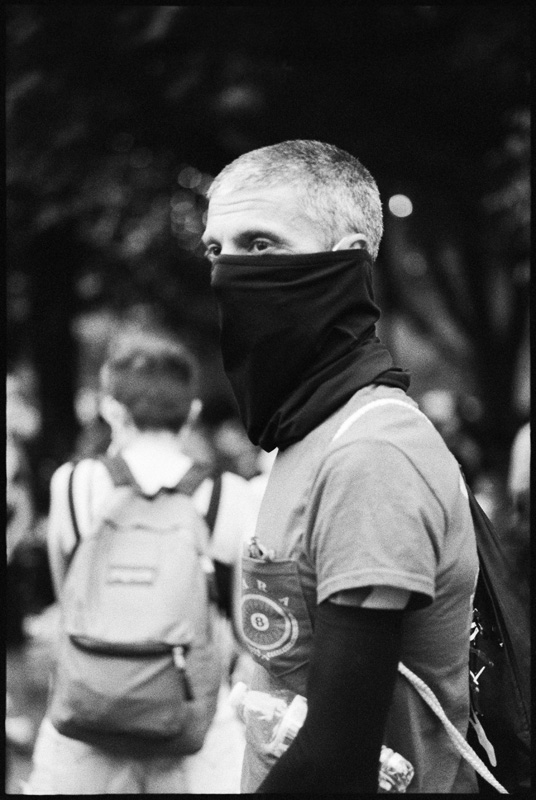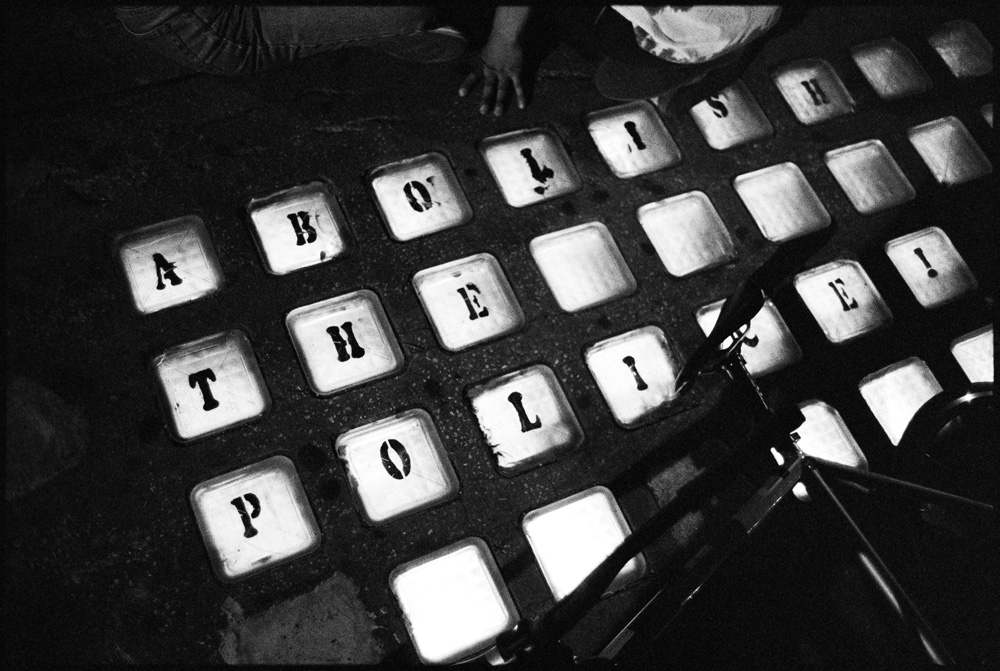Occupy City Hall, also known as Abolition Park, was an occupation protest at City Hall in downtown Manhattan, at the peak of the George Floyd Uprising during June 2020. In addition to the primary goal of persuading the City Council to cut NYPD’s $11 billion effective budget, and redirecting funds to community resources, the park became a community gathering space for activists and organizers, with resources and information for creating a safe and healthy society without the need for police and prisons, aka police and prison abolition.
Things were unfolding faster than you could keep up with. There were a lot of rumblings on whether or not people wanted to be named or identified, as activists have time and again been targeted by the state, so I decided to leave names out.

After nearly a month of Black Lives Matter protests, the largest protests the US has seen in decades, a handful of organizers came together to establish the occupy city hall protest around June 23. as word spread, each night the number of occupiers grew, increasing safety for all from police repression.

Signs read: REFUND THE PEOPLE, EDUCATION NOT INCARCERATION, WHITE SILENCE IS VIOLENCE.

Stacks of pizzas, much larger than this one, would show up at all hours of the day and night, including dairy free pies, and tons of other food and drink available free to all, thanks to volunteers, restaurants, and donations.

There was food, water, a library, clothing, blankets, supplies, medical services, trash and sanitation collection, power generators and solar chargers, art departments, events coordination, and more. It may have seemed chaotic from the outside, especially being somewhat early in the pandemic, but with community caring, and recognition of people’s basic needs, everything was organized. The park became a safe police free zone full of resources for protesters and the unhoused.


Around 3:45am, sprinklers turned on in the knoll and lawn behind the gate. People came together to build barriers using tarps, umbrellas, and protest signs. People were making rounds handing up zip ties and tape from the supplies table.

I was thinking “this is what camping with 100 people looks like,” but more appropriately everyone chanted “this is what community looks like”. It was a beautiful moment of bonding.

There was a clean up crew that would do routine sweeps for trash and recycling, which was separated and collected by the city’s Department of Sanitation.

Sunrise on the 2nd morning. Tents were mostly discouraged, so everyone slept outside.

Using the shoes you wore to walk around NYC as a pillow is real dedication.

Signs read, HEALTHCARE NOT COPS, DEFUND NYPD.

The community was well prepared for minimizing covid-19, with tons of masks and sanitizer.

Police stood guard of the City Hall building from behind the gate, behind presentations on finding and contacting the city council member for your district, calling them, and requesting the police budget be cut.




There was a lot of beautiful chalk art in the tiles of the plaza. This one reads, ABOLISH THE POLICE. Defund -> Abolish -> Recontstruct -> Invest in communities -> Promote financial literacy -> Equal Healthcare.



A major component of the occupation were the countless speeches, sit ins, talks, and education on the history, politics, and practice of funding communities, enslavement in the prison industrial complex, and all related topics.

There were bigger talks, smaller chats, all throughout the days and nights.

A large banner for Breonna Taylor, a Black EMT killed by White Louisville police officers who entered her home while she slept.

One of many painted portraits of George Floyd.

A birthday vigil for Tamir Rice, a Black boy who was killed by a white police officer at age 12 in 2014.

The medic table at Occupy City Hall. There were always medics and supplies available at the protests and marches.

City Hall is at the foot of the Brooklyn Bridge, and an improptu march was organized to block off and cross it into Brooklyn. At the time, all the other bridge marches were with hundreds of people. This one was much smaller, and felt much riskier, but these organizers were determined, and stopped on the other side to give speeches.

On the way back into Manhattan, a protestor held a sign towards car traffic that reads, “RACISM IS NOT GETTING WORSE, IT’S GETTING FILMED”.

Those who stayed back at Abolition Plaza gathered to welcome the marchers, preventing the police from getting violent.

There was always a celebration when protesters were able to stave off an attack by police.


An amazing speaker was invited to educate everyone on police and prison abolition. At this point of the summer, after a month of protests, marches, and speeches, it was easy to feel like you heard it all. Then another speaker would come on with more experience, knowledge, and revelations, about the atrocities and corruption in the carceral and judicial systems, and it would catch everyone’s attention. I wish i could summarize everything I heard, but you sort of had to be there. There are also various articles and books on these subjects.

Glass sidewalk tiles with letters that spell out ABOLISH THE POLICE.

Silhouettes of police offers at City Hall at night.


June 26, on the 4th night, there was an interruption during the general assembly, as convening organizers had varying opinions on protest methods and practices. It was agreed that diversity of tactics are welcome and encouraged, and that the struggle for liberation includes struggling with each other. At 4am, a group of the organizers had a long, difficult but respectful discussion hashing out their differences, ultimately leading to more community agreements, which were announced at the next general assembly.

An activist set up their camping hammock alongside the gate around City Hall.

An activist napping in a little rain, under an umbrella.

An emotional applaud during one of the speeches.

This speaker held various degrees from CUNY schools: BMCC, Brooklyn College, Baruch, and CUNY Graduate Center.


There were still so many large marches going throughout the city, they would stop by City Hall, and post up on the steps as an impromptu auditorium.


This is the end of Part 1 of this series of photos at Occupy City Hall.
Please continue on to Part 2.
–
get notified about WAIT OKAY updates every few months.
